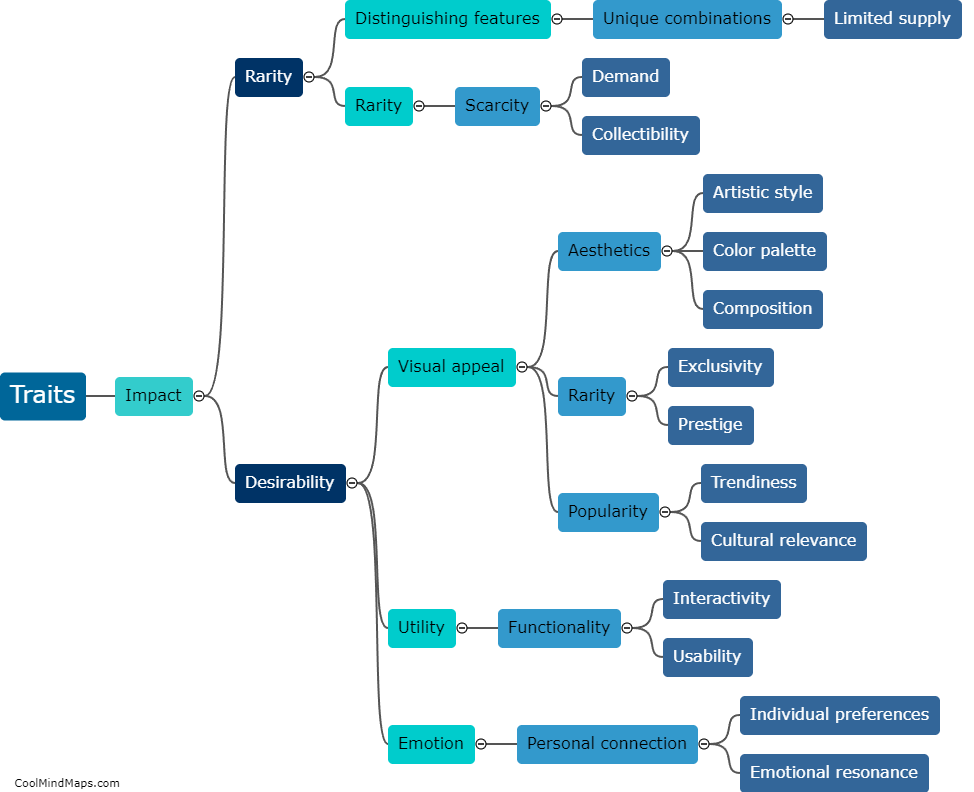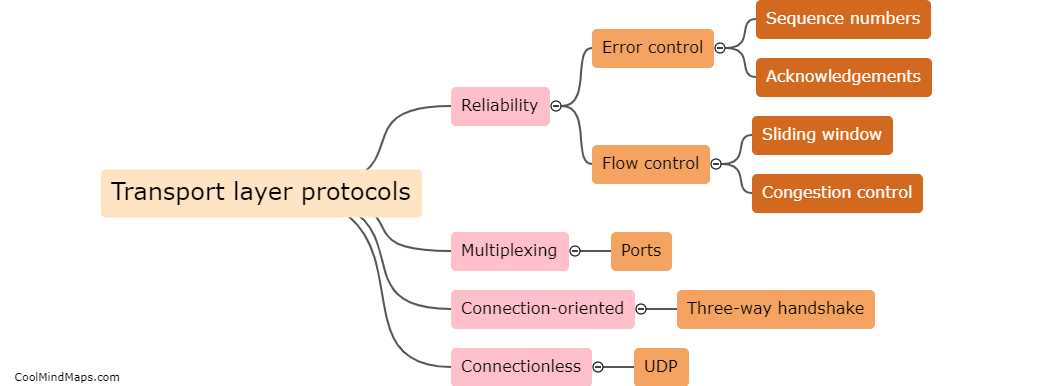What is the purpose of transport layer protocols?
The purpose of transport layer protocols is to ensure reliable and efficient communication between applications or processes running on different devices across a network. These protocols are responsible for breaking down data into smaller units, known as segments, and managing their delivery to the intended destination. They provide mechanisms for error detection, error correction, flow control, and congestion control to ensure that data is transmitted accurately and efficiently. Transport layer protocols also manage communication sessions by establishing connections, maintaining the state of the connection, and terminating it when no longer needed. Overall, the purpose of transport layer protocols is to enable the reliable transmission of data between applications or processes, abstracting away the underlying complexities of the network.

This mind map was published on 19 August 2023 and has been viewed 90 times.











